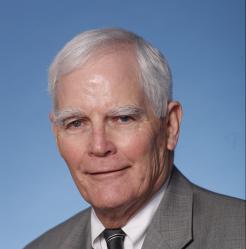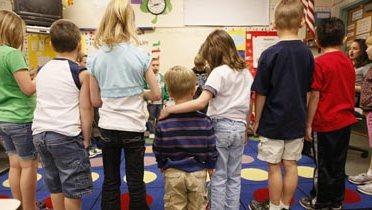New rules recently proposed by the Obama administration aim to force improvements in the near half-century old Head Start program – an $8 billion per year federal initiative that accomplishes much less than some other preschool programs that boost child development and learning. This new collection of papers issued assesses federal policies for early childhood education and child care, and includes ways to reform Head Start and other early education programs to make them better targeted, more effective, and provide better taxpayer bang-for-the buck in these tough fiscal times.
Co-edited by Brookings Senior Fellow Ron Haskins and W. Steven Barnett of Rutgers University’s National Institute for Early Education Research, Investing in Young Children: New Directions in Federal Preschool and Early Childhood Policy focuses on Early Head Start, Head Start, and home visiting. The editors recommend promising reforms for all three programs, including closing ineffective Head Start centers or giving other program operators the opportunity to compete for Head Start funds, and offering a few states broad regulatory relief to innovate and coordinate Head Start with other state preschool educational programs and child care.
Introduction: New Directions for America’s Early Childhood Policies » (PDF)
Ron Haskins and W. Steven Barnett argue that there has never been a better time to review early childhood education policy and to propose new directions. They say most of the major federal policies have been in effect for at least a decade, providing adequate time to judge their value after full implementation; some trimming or coordination between the programs would help eliminate the programs’ similar or overlapping purposes. In addition, Congress is likely to start reducing spending on many programs in its attempt to move the federal budget, which is on an unsustainable path in the long term, toward balance. Finally, states are in deep fiscal trouble as well. Despite all these barriers to new spending, the Obama administration has made a commitment to improving early childhood programs and has proposed expanding federal support for some of these programs.
Getting the Most out of Early Head Start: What Has Been Accomplished and What Needs to be Done » (PDF)
John M. Love and Jeanne Brooks-Gunn focus on the modest impacts on a range of child and parent outcomes including cognitive, language, and social-emotional development as well as attention and engagement, noting that some, such as increased attention and reduced behavioral problems, were observed even two years after the end of the program (at age 5), although the effects on vocabulary (except for a few subgroups) and school-related cognitive abilities in literacy and mathematics did not continue. The authors also emphasize the importance of impacts on parenting and the home environment from ages 14 months through age 5 years.
Ten Ideas for Improving Early Head Start—and Why the Program Needs Them » (PDF)
Nicholas Zill argues that the Early Head Start’s impacts are mostly quite small, that many expected outcomes measured at the various assessment points did not materialize, and that many of the positive impacts were found only on parent reports while direct assessments of the same or related measures showed no differences. He concludes that the “lack of sustained impacts in critical areas of children’s cognitive and language development tells us that the program is not succeeding.”
Leave No (Young) Child Behind: Prioritizing Access in Early Education » (PDF)
Jens Ludwig and Deborah A. Phillips argue that while the impacts of Head Start are modest, something is better than nothing – it is worthwhile and provides children with a boost, however small, that can be detected well into the teenage years and after. They propose ensuring as many children as possible receive a preschool program that is at least as good as Head Start.
Head Start: Strategies to Improve Outcomes for Children Living in Poverty » (PDF)
Craig T. Ramey and Sharon Landesman Ramey write that far too many Head Start centers are ineffective because they are of such low quality, and that despite these facts being known for years, a “culture of silence” about the program’s shortcomings has protected it from being cut. In fact, Head Start’s budget has grown every year from 1970 to the present under both Republican and Democratic administrations with the exception of level funding in 1975 and small declines in 1986 and 2008.
The Nurse-Family Partnership » (PDF)
David Olds is fully supportive of the current federal policy approach that focuses on low-income, first-time mothers and concentrates most of its spending on programs with the strongest empirical evidence of effectiveness.
Strengthening Home-Visiting Intervention Policy: Expanding Reach, Building Knowledge » (PDF)
Deborah Daro and Kenneth A. Dodge strongly object to adopting the Olds approach because they believe that many families will be left out, that other programs have good evidence of effectiveness, and that more effort should be placed on screening to determine who needs more extensive home visiting. They argue for a universal program of home visiting that would serve as a screening program to determine which mothers and babies need additional help, as opposed to the current program which potentially leaves out more than 90 percent of newborns. They cite evidence that the per child cost of the type of screening they favor would be around $200. But whether their proposals could prevent abuse and neglect, and improve child development, is largely untested.
Coordinating America’s Highly Diversified Early Childhood Investment Portfolio » (PDF)
Walter S. Gilliam recommends letting state pre-K programs continue to expand and eventually serve all 4-year-olds or at least all low-income 4-year-olds. Head Start could then focus on what Gilliam says it does best: namely, provide comprehensive services, work with parents, and conduct home visits. He also raises the possibility that Head Start could focus its attention on 3-year-olds and children under age 3 and calls for closer cooperation between child care programs and high-quality programs that provide services for only part of each day.



